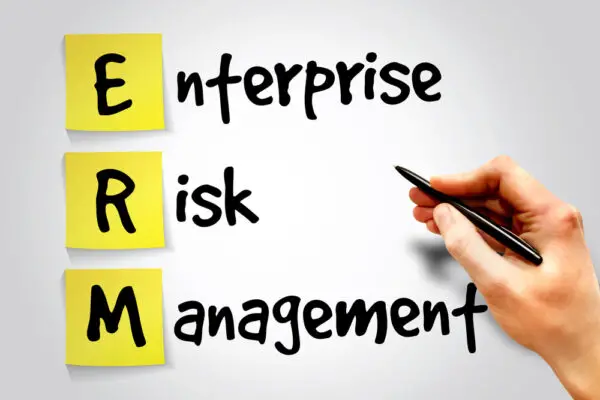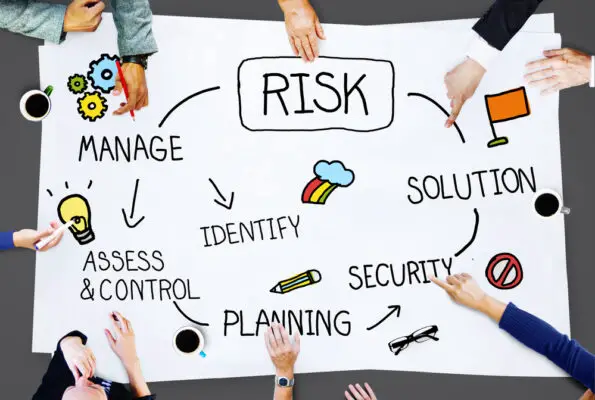Do risk practitioners know what strategic risk management is? Many organizations don’t know how to carry out a strategic risk assessment exercise. They also have no measures in place to accurately measure consistently the same. When it comes to managing strategic risk, two-thirds (67 percent) of the companies reported that the CEO, board, or board risk committee has responsibility a survey done by Delloite. Do the boards and risk committees know how to align with the organization’s risk management framework?
Organizations of all sizes are constantly confronted with risks, whether a natural disaster, cyber-attack, or financial downturn. While some risks can be anticipated and plan put in place to mitigate them, others come as a complete surprise. Protecting an organization from the unexpected, it’s important to understand strategic risk management and apply it. This blog post will provide an overview of strategic risk management and how you can use it to strengthen your organization.
What is Strategic Enterprise Risk Management?
Strategic enterprise risk management is the proactive identification, assessment, and management of risks to an organization’s ability to achieve its goals. Risks can be categorized as strategic, operational, or compliance risks.
Strategic risks could prevent the organization from achieving its desired outcomes. Operational risks could impact day-to-day business operations, and compliance risks are those related to legal and regulatory requirements.
SERM involves assessing these risks and developing risk management plans to mitigate them. Key components of a successful SERM program include risk assessment, risk response planning, communication and reporting, and monitoring
Risks can come from various sources, including internal and external environmental factors, financial instability, operational disruptions, or strategic missteps. Strategic enterprise risk management helps identify potential threats to an organization and develop strategies to mitigate those threats.
The goal is to protect the organization’s ability to achieve its objectives and minimize potential negative impacts on business performance.

What is The Difference Between ERM and SRM?
- ERM plans and manages risks at the enterprise level, while SRM focuses on specific strategic risks that are important to the business
- ERM (Enterprise Risk Management) is a formal, top-down process for assessing and managing risks to an organization
- ERM is broader in scope and looks at all possible risks to the organization, while SRM is narrower and focused on specific threats or opportunities
- SRM is more reactive, responding to specific events as they occur, while ERM takes a more proactive approach by identifying potential risks before they happen.
- ERM typically involves the use of risk assessment and management tools such as probability and impact matrices, while SRM usually use key risk indicators
- ERM is typically implemented by risk management professionals, while the strategy department of the organization may implement SRM but with input from the risk management division.
Why is Strategic Risk Important?
- Strategic risk is important because it helps an organization identify and assess potential threats to its long-term success.
- It can help organizations make better decisions by identifying opportunities and risks that may be hidden or unknown.
- Strategic risk can also help organizations prepare for potential disruptions and emergencies.
By being proactive, organizations can mitigate potential risks and maximize opportunities.
What Are the Four Risk Strategies?
Four primary risk strategies can be taken to reduce the likelihood of experiencing negative consequences: avoidance, deterrence, protection, and insurance.
- AVOIDANCE is when you take steps to eliminate or minimize the exposure to potential risks.
- DETERRENCE is when you implement measures to discourage risky behaviour.
- PROTECTION is when you use safeguards and barriers to prevent harm from happening.
- INSURANCE is a financial strategy that transfers risk from an individual or organization to an insurance company in exchange for a premium payment.
Strategic Risk-taking: A Framework for Risk Management
Without a framework for managing strategic risks, an organization can be left vulnerable to Competitive Advantage disadvantages. The best way this should work is by identifying an organization’s strengths and weaknesses; then, work toward strengthening those areas while reducing reliance on other factors that may prove detrimental over time if not mitigated properly.
The strategic risk-taking framework will aggregate, identity, neutralize and monitor on proactive basis risks that are inevitable in every organization. As the business landscape continues to change, it poses a greater challenge in identifying and executing strategic risk-taking.
For organizations to be successful, they need a framework that will help them avoid risks and capitalize on opportunities. It is where strategic risk management becomes an important part of the picture for any business or company looking towards long-term success.
Strategic Planning Risk Management
Planning for strategic risks is a critical step in developing any successful plan. The risk management team should ensure that when strategies are populated, there’s an assessment. The assessment can be ready to go at whatever point necessary or appropriate based upon the ERM framework.
The ERM framework should be a guiding document to help the risk management team define a standard approach. The great thing about a standard approach is that it allows the company to be consistent in assessing and monitoring risks, both throughout the organization and across different units of business.
One appropriate method for assessing strategic risks is the scenario planning technique. It’s important to explore different possibilities when considering different outcomes. It is especially true for global organizations, which will understand how to mitigate the risk of developing strategies that may not adapt to changing conditions.
Importance of strategic planning risk management
- Planning establishes a framework for making decisions and taking actions, which leads to better outcomes since there is a specific goal in mind. Without a plan, people can flounder and make inefficient choices.
- Risk management allows an organization to identify potential risks before they become actual problems and then mitigate those risks. It can save the company time, money, and reputation.
- Good planning and risk management help an organization be more agile and respond quickly to changes in the market or environment. This agility often gives companies a competitive edge.
The Strategic Risk Management Plan
A strategic risk management plan is a document that outlines how an organization will identify, assess, respond to, and monitor risks to its business. The plan should be tailored to the specific needs of the organization. It should include steps for identifying potential risks, assessing the likelihood and impact, developing response plans, and monitoring risk mitigation efforts.
A good strategic risk management plan will help an organization manage its risks and avoid costly surprises down the road. It’s important to remember that no business is immune to risk, so every organization should have a strategic risk management plan in place.

Importance of strategic risk management plan
- A strategic risk management plan is important because it allows your business to identify, assess, and respond to potential risks that could impact your bottom line.
- By identifying potential risks upfront, you can develop contingency plans and mitigation strategies to reduce the chances of those risks becoming actual problems.
- A well-crafted risk management plan will also help you stay compliant with any applicable regulations and ensure that your business is prepared for any potential disruptions.
Outline of a strategic risk management plan
- Establish risk management objectives
- Define the risk universe
- Risk identification
- Qualitative and quantitative analysis of risks
- Risk response planning
- Implementation of risk response plans
- Monitoring and reporting of risks
Conclusion
To know how to align strategic risk with its risk management framework, board members and other high-level executives must prioritize a budget for the process. The survey found that only one in four (25 percent) organizations allocate a specific amount of money or set aside time on an annual basis for this exercise. It is concerning because these risks can significantly impact businesses if they are not managed properly from start to finish.
When you think about your company’s most valuable assets, what do they entail? Have you ever thought about them as being at risk? If so, consider investing in some strategic risk management now before those investments end up becoming something else entirely down the line.
Strategic risk assessment is important for organizations because it allows them to identify and quantify all the risks they are exposed to, even those with a low probability of occurring. Once you have all this data at hand, you can prioritize your risk management program based on the most relevant risks first.
In today’s global market, there are a variety of risks that can impact your business. It is important to stay on top of these issues, from the macroeconomic environment to new technologies and products through strategic risk management. It will allow you to identify potential problems before they happen and take steps in advance for mitigating them.

Chris Ekai is a Risk Management expert with over 10 years of experience in the field. He has a Master’s(MSc) degree in Risk Management from University of Portsmouth and is a CPA and Finance professional. He currently works as a Content Manager at Risk Publishing, writing about Enterprise Risk Management, Business Continuity Management and Project Management.

